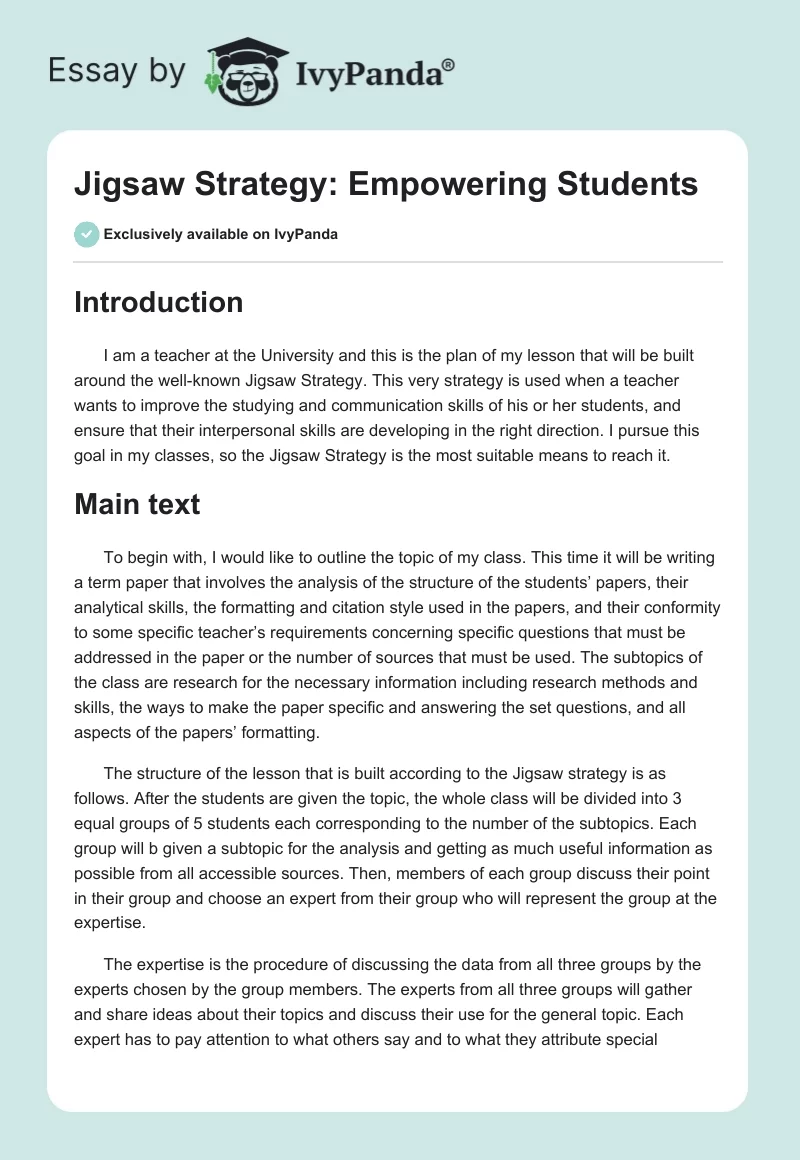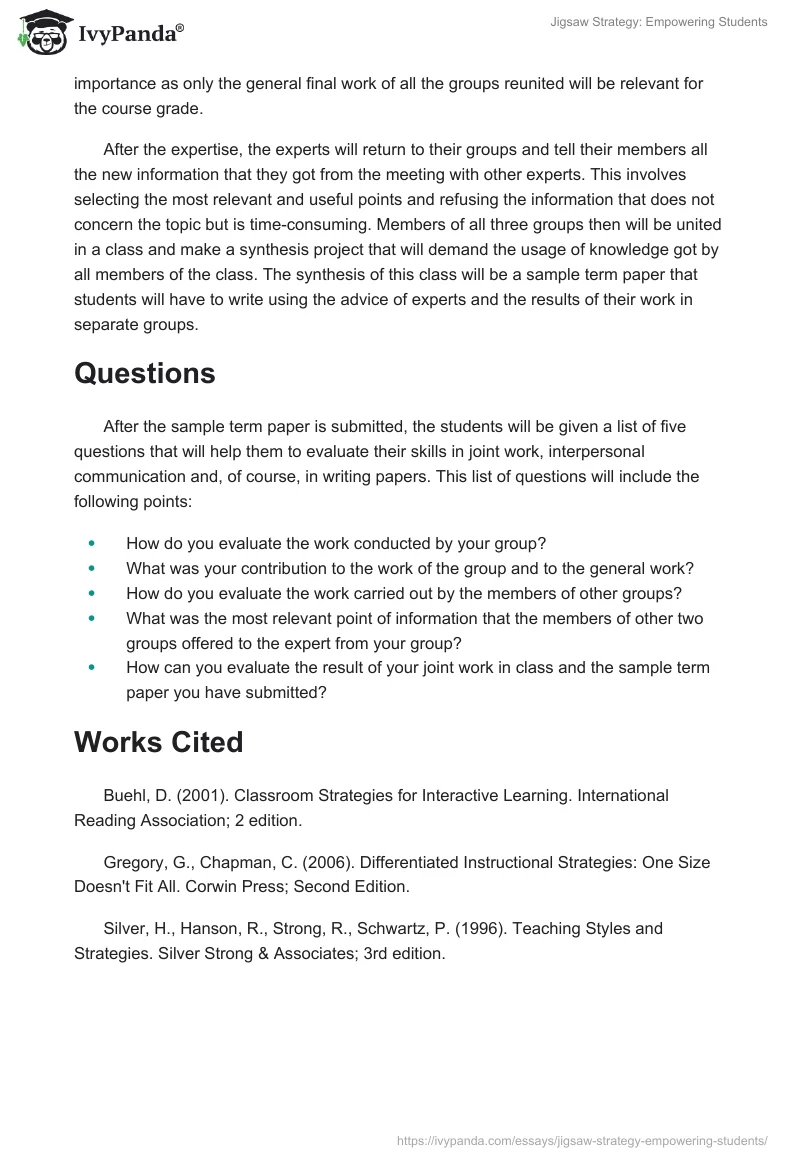Introduction
I am a teacher at the University and this is the plan of my lesson that will be built around the well-known Jigsaw Strategy. This very strategy is used when a teacher wants to improve the studying and communication skills of his or her students, and ensure that their interpersonal skills are developing in the right direction. I pursue this goal in my classes, so the Jigsaw Strategy is the most suitable means to reach it.
Main text
To begin with, I would like to outline the topic of my class. This time it will be writing a term paper that involves the analysis of the structure of the students’ papers, their analytical skills, the formatting and citation style used in the papers, and their conformity to some specific teacher’s requirements concerning specific questions that must be addressed in the paper or the number of sources that must be used. The subtopics of the class are research for the necessary information including research methods and skills, the ways to make the paper specific and answering the set questions, and all aspects of the papers’ formatting.
The structure of the lesson that is built according to the Jigsaw strategy is as follows. After the students are given the topic, the whole class will be divided into 3 equal groups of 5 students each corresponding to the number of the subtopics. Each group will b given a subtopic for the analysis and getting as much useful information as possible from all accessible sources. Then, members of each group discuss their point in their group and choose an expert from their group who will represent the group at the expertise.
The expertise is the procedure of discussing the data from all three groups by the experts chosen by the group members. The experts from all three groups will gather and share ideas about their topics and discuss their use for the general topic. Each expert has to pay attention to what others say and to what they attribute special importance as only the general final work of all the groups reunited will be relevant for the course grade.
After the expertise, the experts will return to their groups and tell their members all the new information that they got from the meeting with other experts. This involves selecting the most relevant and useful points and refusing the information that does not concern the topic but is time-consuming. Members of all three groups then will be united in a class and make a synthesis project that will demand the usage of knowledge got by all members of the class. The synthesis of this class will be a sample term paper that students will have to write using the advice of experts and the results of their work in separate groups.
Questions
After the sample term paper is submitted, the students will be given a list of five questions that will help them to evaluate their skills in joint work, interpersonal communication and, of course, in writing papers. This list of questions will include the following points:
- How do you evaluate the work conducted by your group?
- What was your contribution to the work of the group and to the general work?
- How do you evaluate the work carried out by the members of other groups?
- What was the most relevant point of information that the members of other two groups offered to the expert from your group?
- How can you evaluate the result of your joint work in class and the sample term paper you have submitted?
Works Cited
Buehl, D. (2001). Classroom Strategies for Interactive Learning. International Reading Association; 2 edition.
Gregory, G., Chapman, C. (2006). Differentiated Instructional Strategies: One Size Doesn’t Fit All. Corwin Press; Second Edition.
Silver, H., Hanson, R., Strong, R., Schwartz, P. (1996). Teaching Styles and Strategies. Silver Strong & Associates; 3rd edition.

